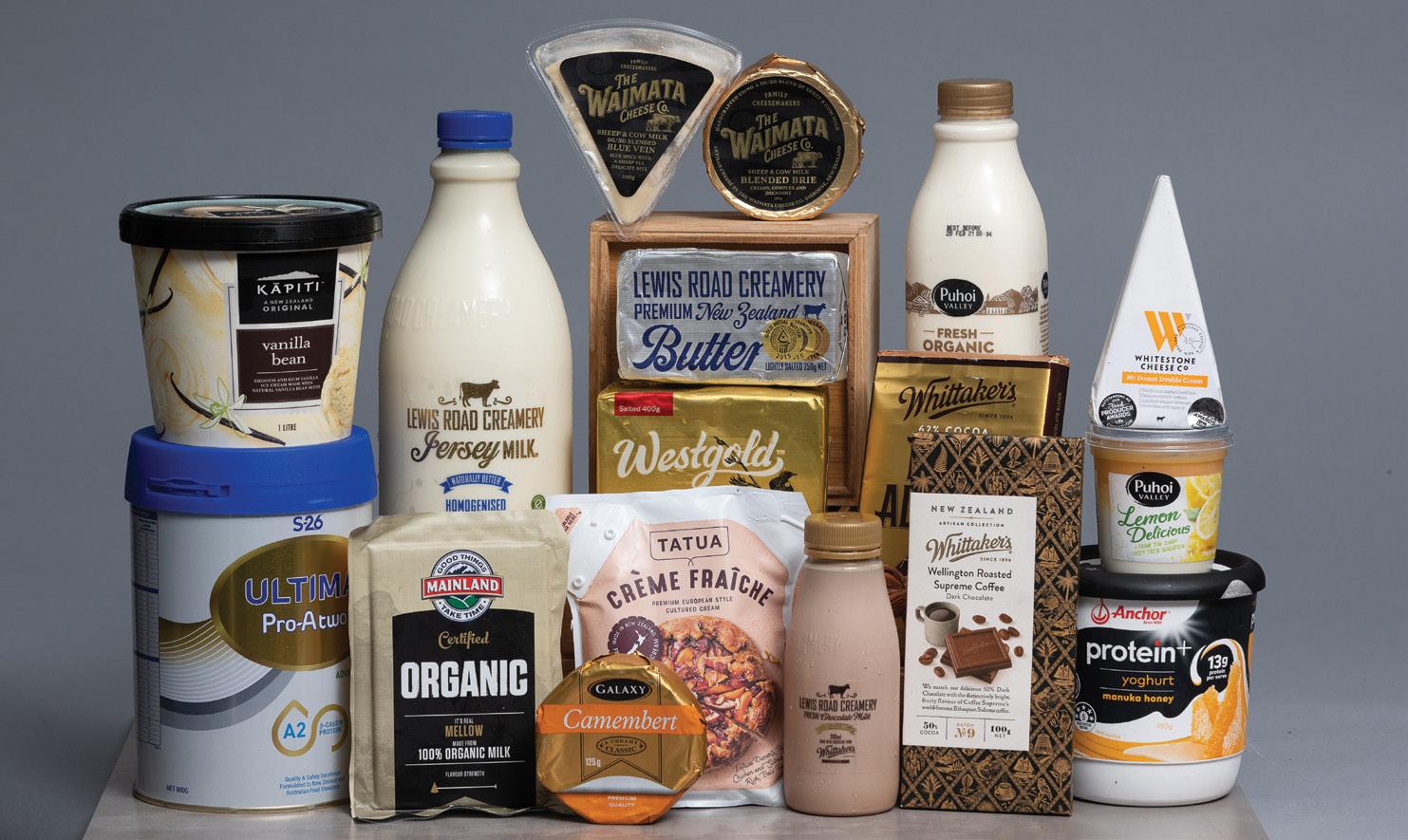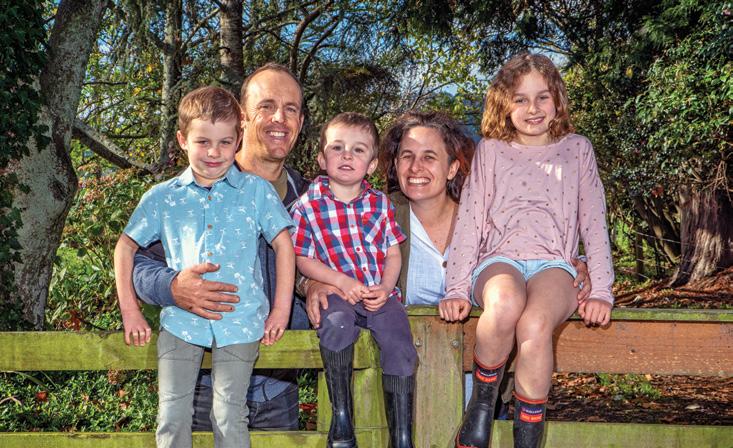Special report | AMBASSADORS
s r o d a s s a b m A making changes
Farmer and DairyNZ environment leader Andrew Booth is advocating for farmers to do better by reducing greenhouse gas emissions and controlling contaminants from water ways. Chris Neil attended a field day onfarm to find out more.
A
ndrew and Vicky Booth hosted a DairyNZ field day for farmers to explore options that will help them be ready to meet their obligations for greenhouse gas emissions. As a DairyNZ dairy environment leader and climate change ambassador, Andrew’s focus is broader than reducing and mitigating greenhouse gas (GHG) emissions. He is also seeking sediment control and E. coli contaminant from water ways. The 210ha farm owned by Andrew’s parents Richard and Sharron has 174ha effective which includes 40ha leased. In their second season of 50:50 sharemilking they are heading to record production as a result of management changes that have significantly improved pasture and crops eaten and included a reduced stocking rate. DairyNZ focused the first session of the field day on the critical GHG issue they want farmers to understand. These are identified in the Climate Change Commission January 31 2021 draft advice and evidence reports which will be finalised and shared with the Government on May 31 this year. The report’s message is clear – to meet the targets set in the Climate Change Response Act, “Government must pick up the pace. Aotearoa will not meet its 2050 targets without strong and decisive action now to drive low emissions technologies and behaviour change across all sectors.” Climate change mitigation is the most
66
significant driver of change New Zealand farmers will face in the next decade. While addressing this need to control the cause of global warming, it is likely that farmers will also be coping with the consequences of climate changes such as increased frequency and severity of weather events. Because of its implications for every farmer, reading the source document seems a reasonable time investment – it can be found with a search for the Climate Change Commission Report. He Waka Eke Noa (HWEN) is the primary sector climate action partnership intent on reducing agriculture emissions and building the sector’s resilience to climate change. HWEN has developed guidance for all farmers and growers on ways to reduce GHG. These are available on the HWEN website. As clearly indicated by Fonterra and our trade ambassadors, the drivers behind these changes are more than New Zealand social / government demands. There are clear expectations of onfarm change by key customers such as Nestle, McDonalds, Starbucks and Danone who have promised carbon-neutral products to their customers. For these market influencers to deliver their promise, NZ suppliers / producers must make changes if they wish to continue as high-end suppliers. Between now and 2030 there are eight farming cycles which leaves no time for
Farm Facts
2019/20
Land Area: 210ha total/174ha eff Cows milked: 400 Milk production: 908kg MS/ha Milk production: 385g MS/cow Supplement grown: 320t DM N applied: 120 units BW/PW: 94/111 Calving date: 13 April PSC Purchased nitrogen surplus: 71kg N/ha Greenhouse gas emissions: 8624kg C02e/ha
procrastination and little time for trial and error. Andrew and Vicky Booth believe the onfarm change needed to reduce emissions must be happening now. They want to make their contribution while recognising that it needs all farmers to participate to achieve meaningful environmental improvement and protect our high-value markets. Their plan for climate change mitigation is focused on finding management changes that will both reduce GHG and farm working expenses to improve farm profitability.
Dairy Exporter | www.nzfarmlife.co.nz | May 2021


























